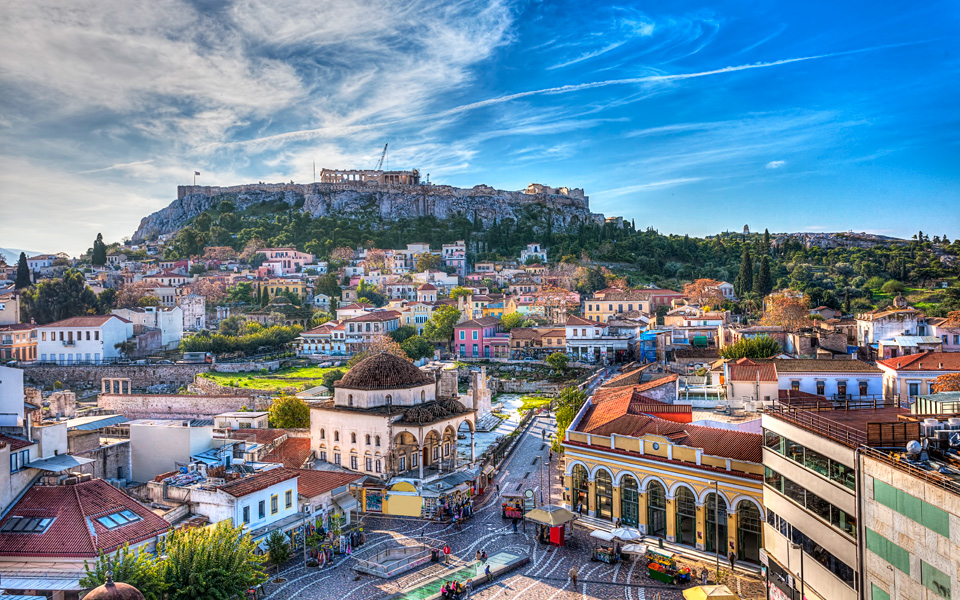By Dimitra Manifava
Tourism is breathing new life into Athens’s beleaguered commercial triangle – the area encompassed by Syntagma, Omonia and Monastiraki squares – as the share of shuttered shops has dropped below 25 percent for the first time since September 2012, when the Hellenic Confederation of Commerce and Entrepreneurship (ESSE) started the relevant survey.
The rise of tourism in the Greek capital has led mainly to the opening of new food service outlets where traditional retailers – such as clothing stores – used to operate, while food stores, including supermarkets, have added to the area’s commercial revival. These are activities that have benefited from the increase in tourism throughout the year but also from skyrocketing popularity of Airbnb-style accommodation in the city center.
On the contrary, central arteries on the edge of that triangle, such as Stadiou and Panepistimiou streets, continue to appear abandoned, particularly in the vicinity of Omonia Square. Worse, many streets around the Exarchia area have evolved into drug dealing hubs, with a similar picture of abandonment.
According to the ESSE survey, the rate of shuttered shops in downtown Athens came to 24.9 percent in March, the lowest in the last six years, from 26.1 percent last September and 26.3 percent in March 2017. This was also the first time that four streets from a total of 25 monitored by ESEE had a rate below 10 percent. These are Patriarchou Ioakeim, Aghiou Markou, Athinas and Ermou, with the latter witnessing the most dramatic recovery: In September 2013, 28.3 percent of stores on the high street were closed, with this rate now down to just 9.9 percent.
On the other hand seven city center streets have a shut-shop rate that exceeds 30 percent, with Harilaou Trikoupi reaching 42.7 percent as it has yet to recover from the riots of December 2008 and February 2012. Across all the areas covered by the survey, the rate came to 27.65 percent.
Besides Athens center, ESEE has also surveyed the markets in Piraeus, Kallithea, Glyfada, Peristeri, Maroussi, Nea Ionia, Halandri and Kifissia in Attica, as well as in the cities of Thessaloniki and Patra. The findings are discouraging. In Piraeus, the shut-shop rate is 34.03 percent and in Kallithea 42.9 percent after rising 0.2 percent y-o-y. A rise is also seen at Nea Ionia, Glyfada, Maroussi and Kifissia.
This article was initially published by ekathimerini.com











